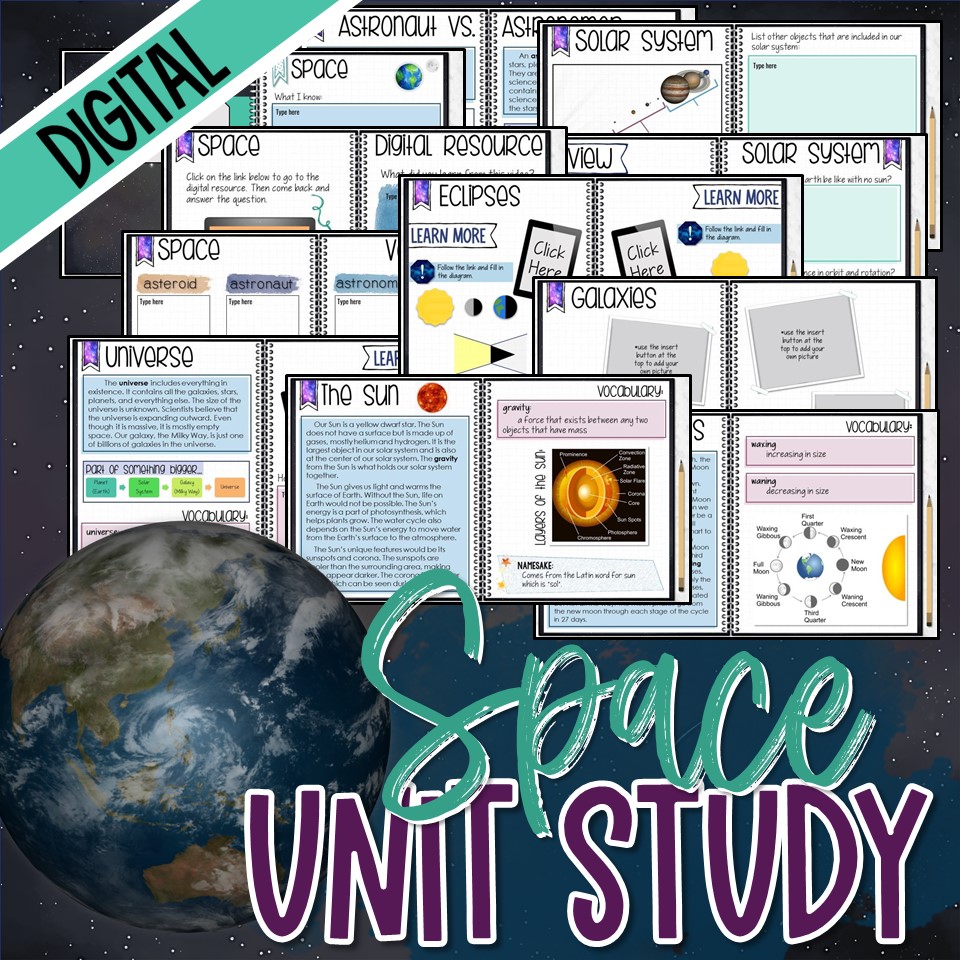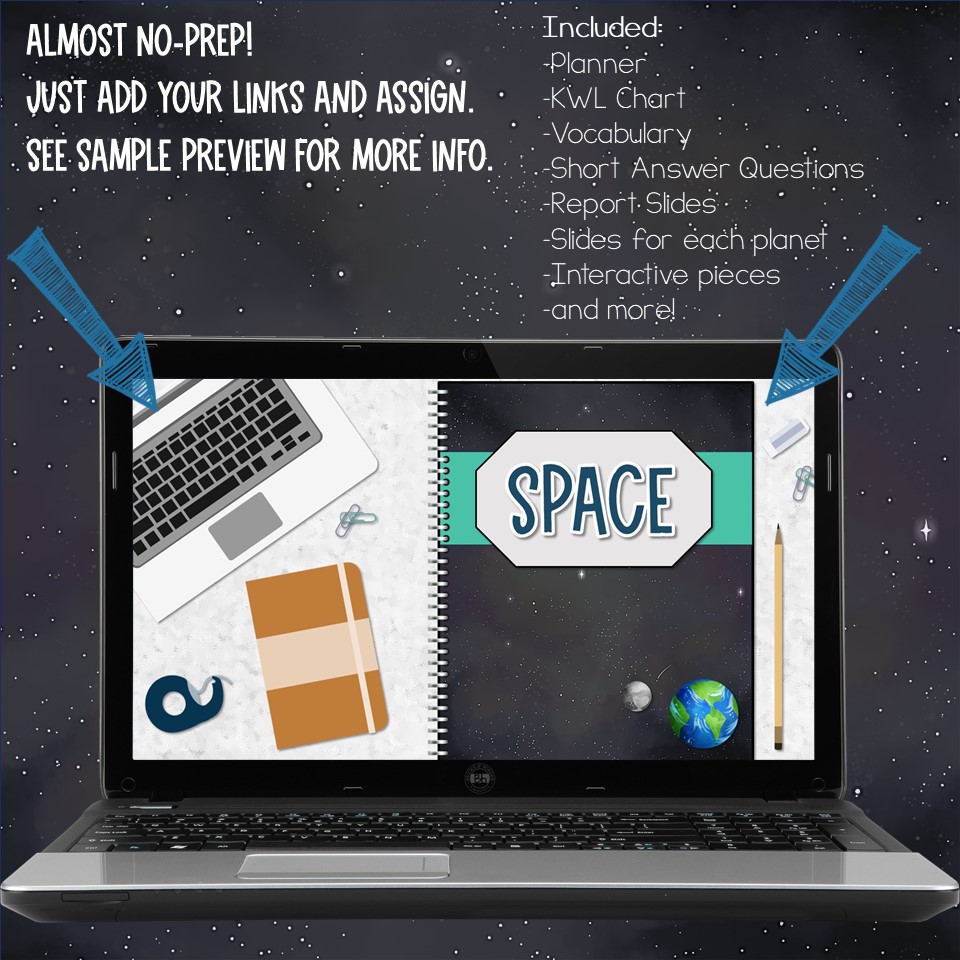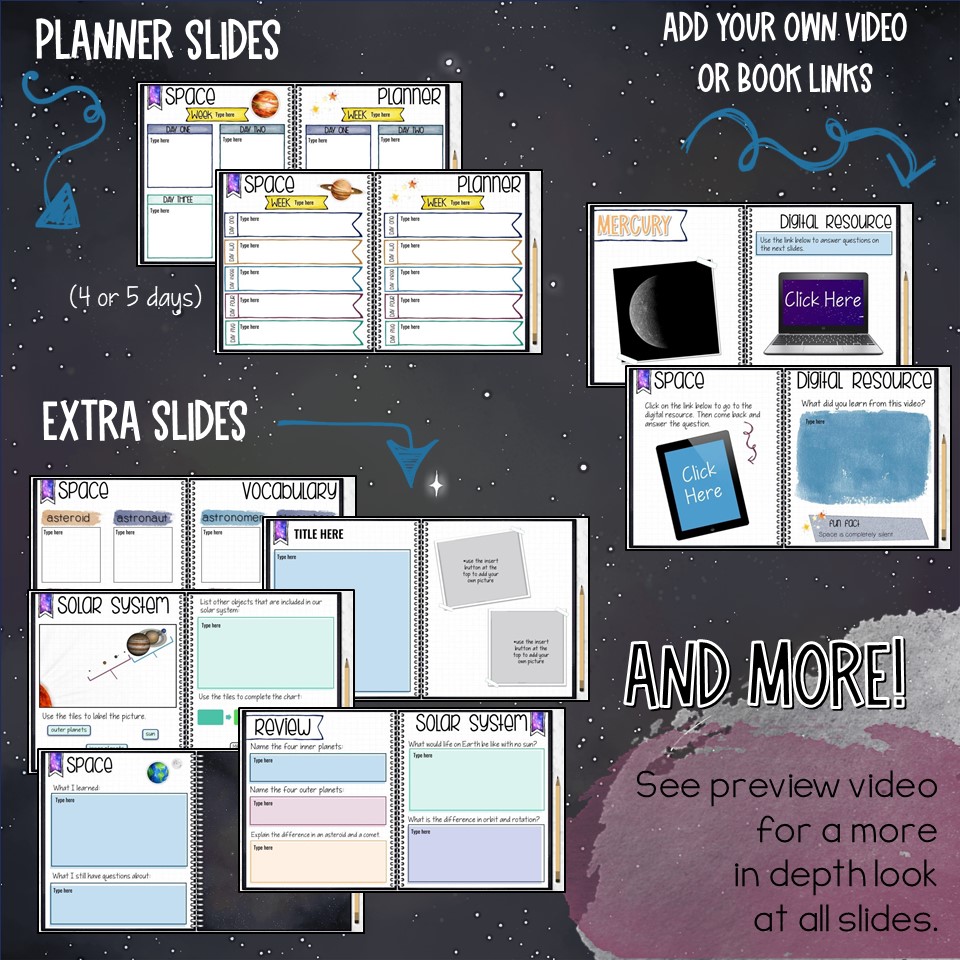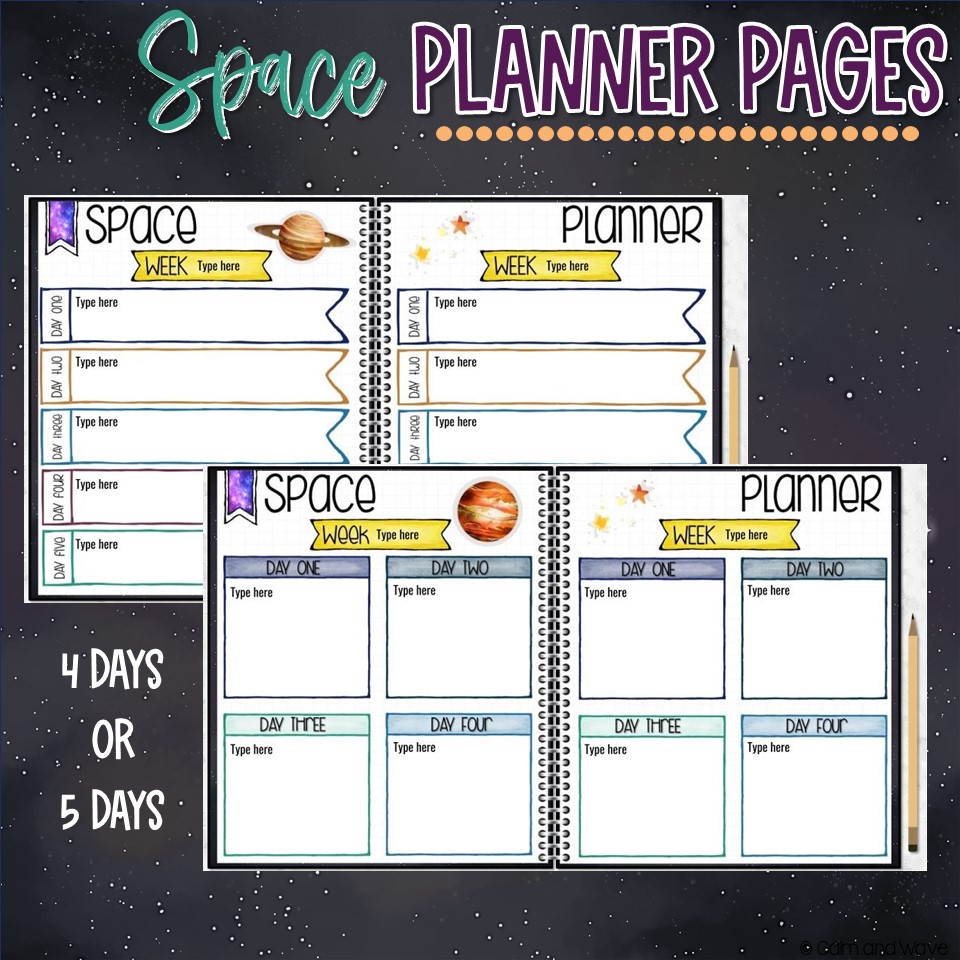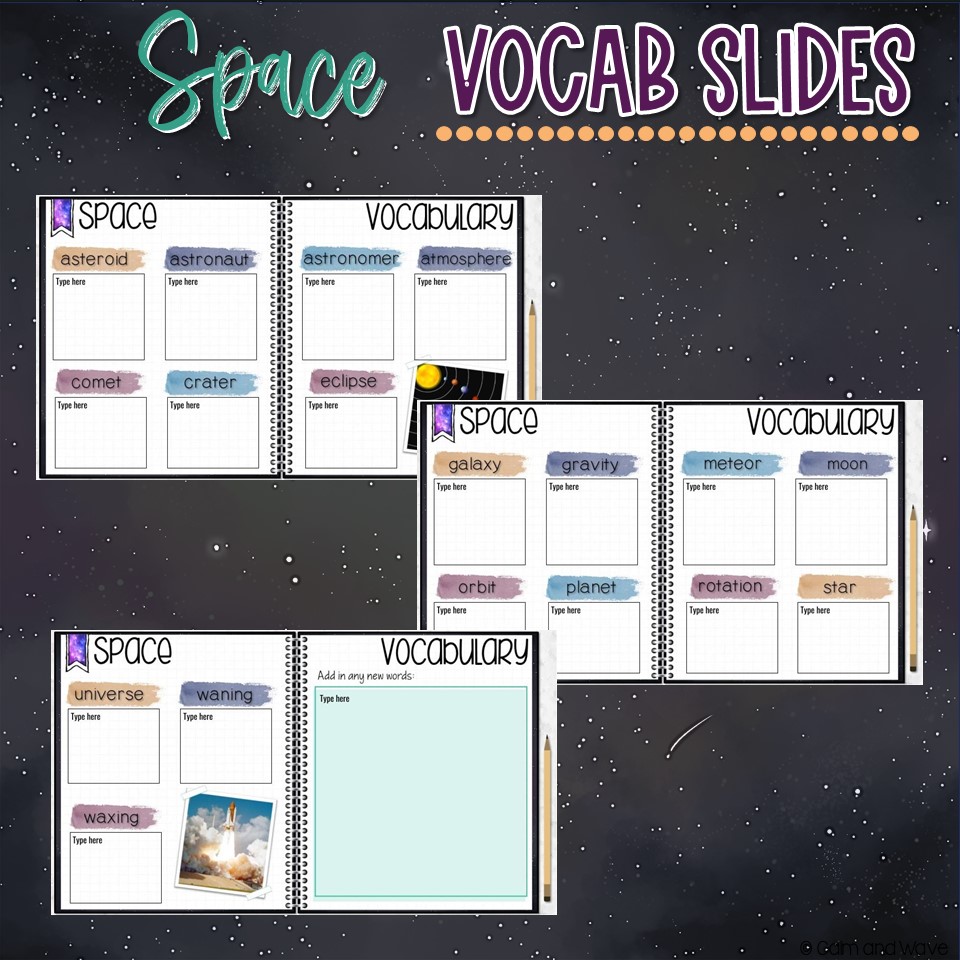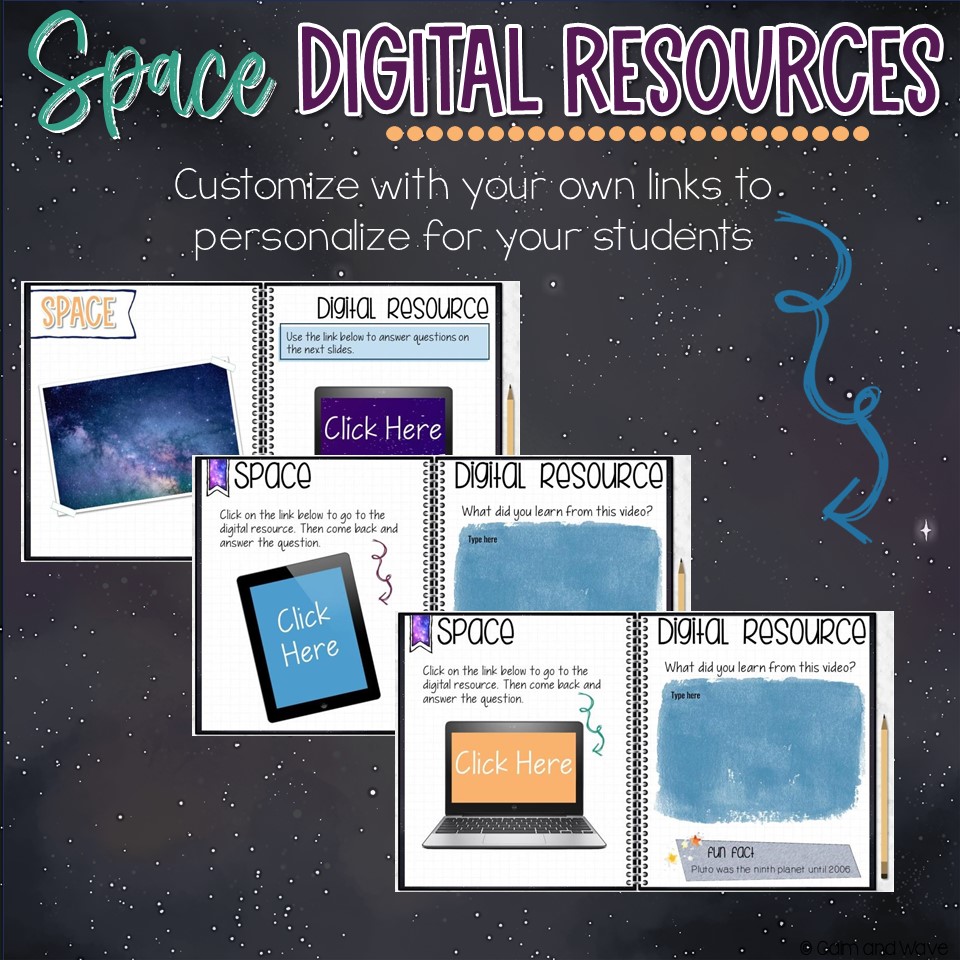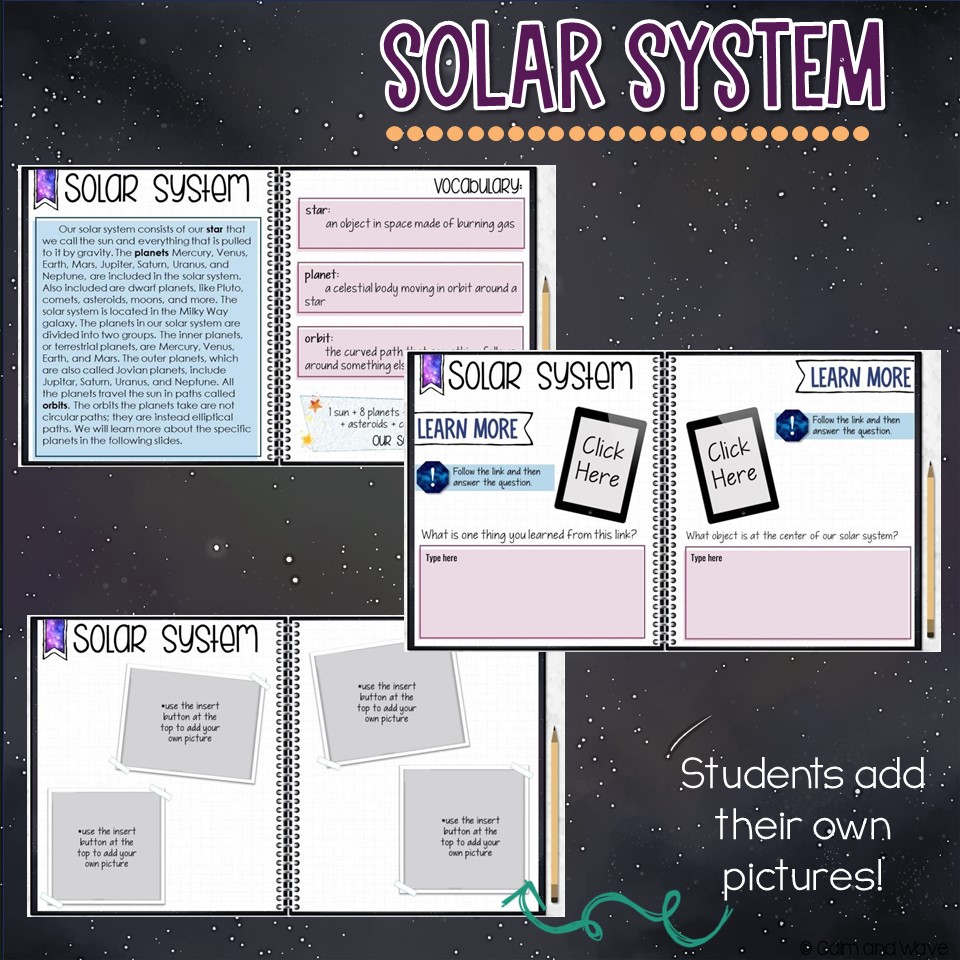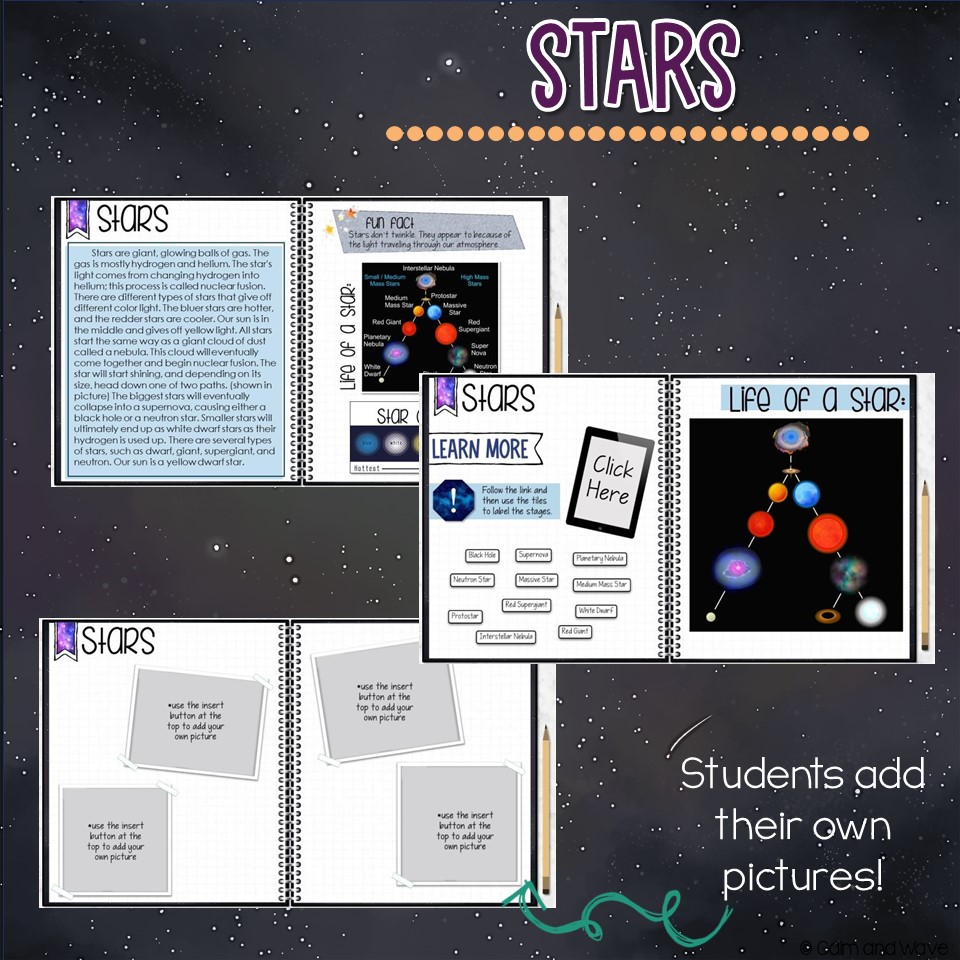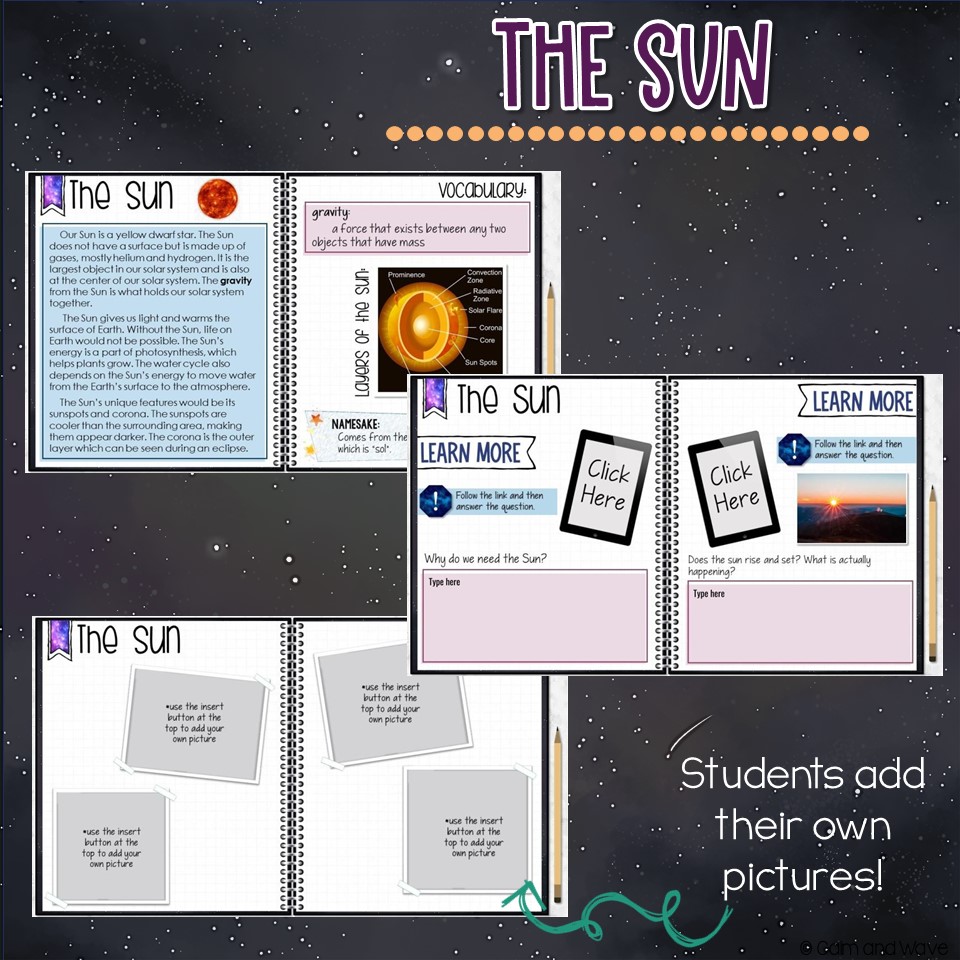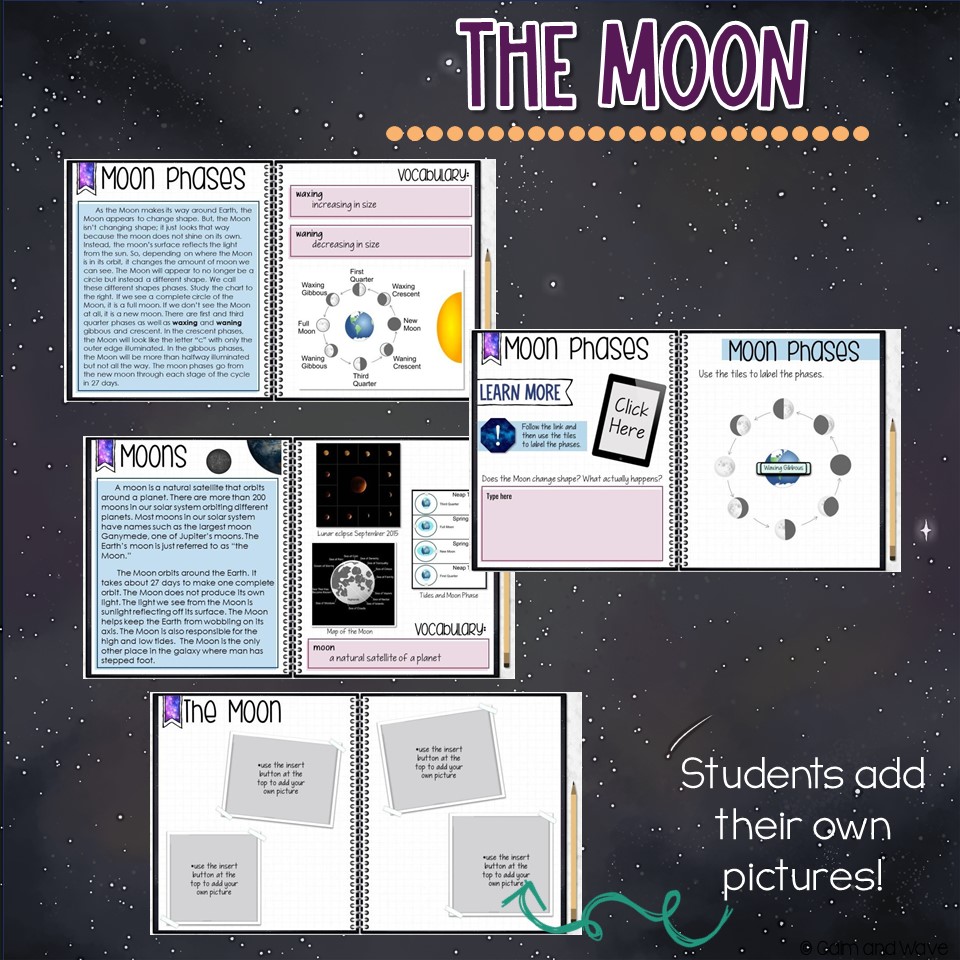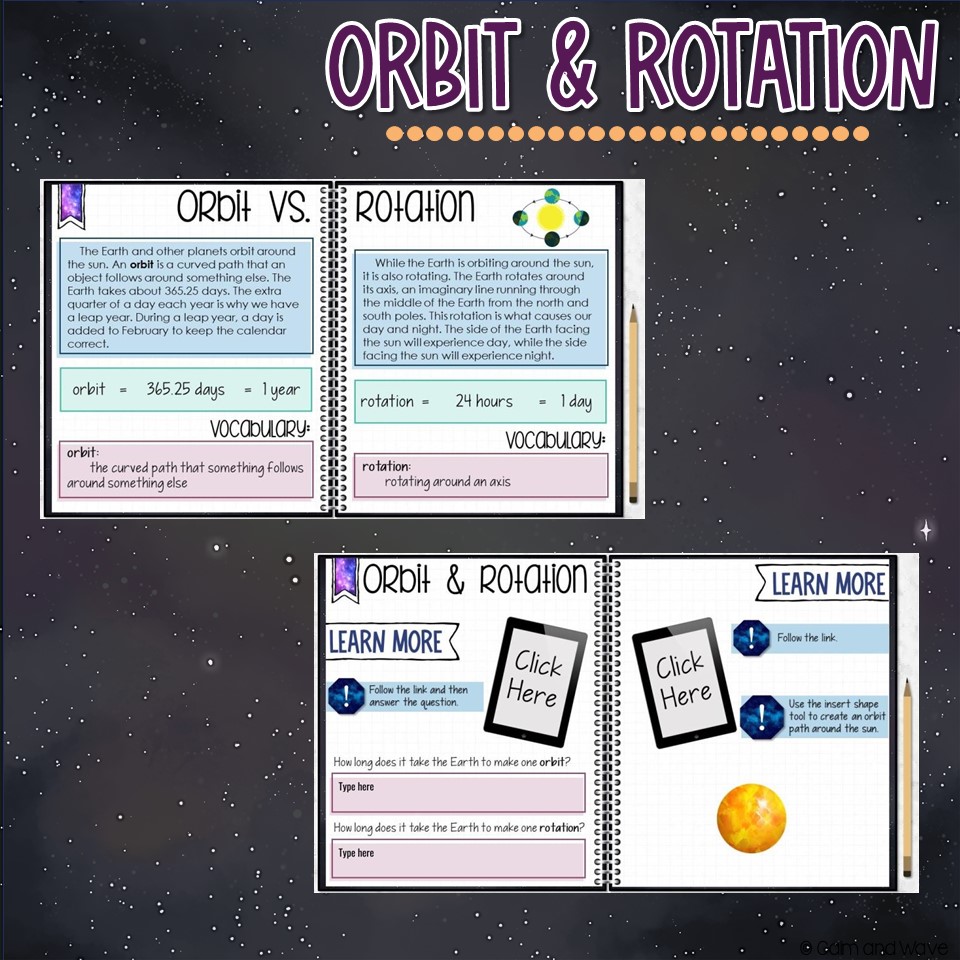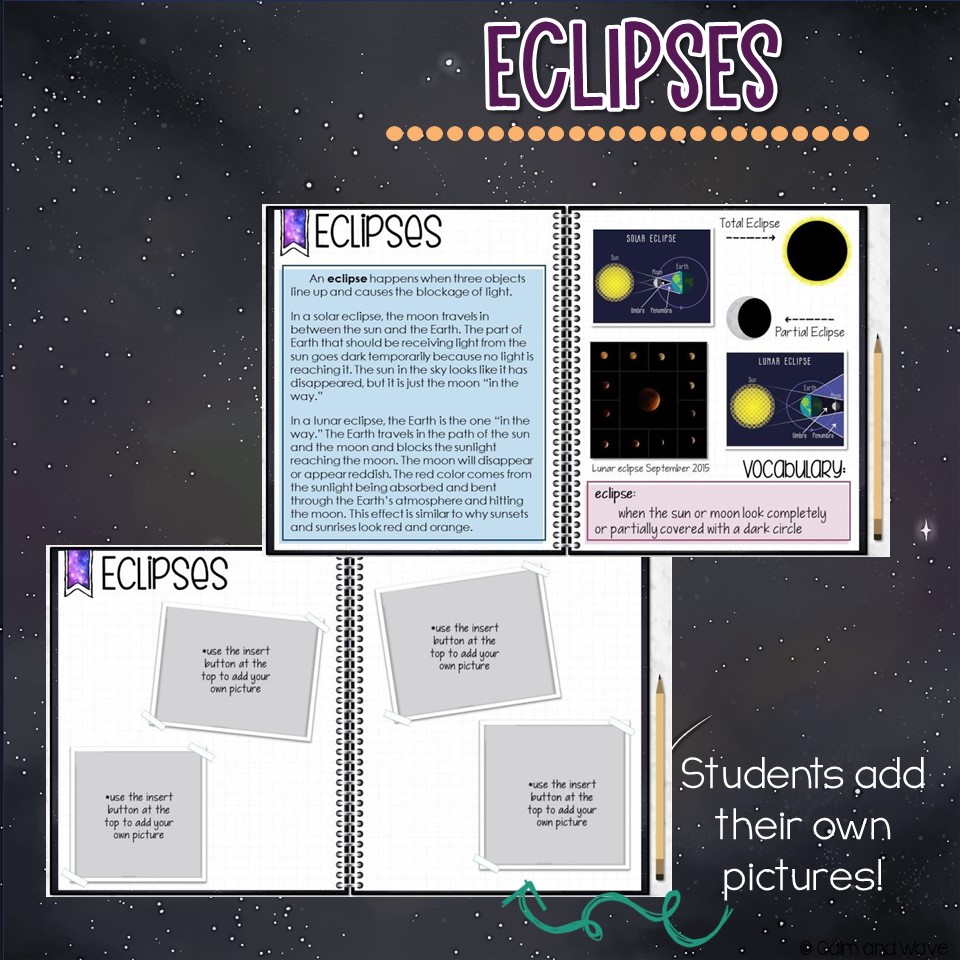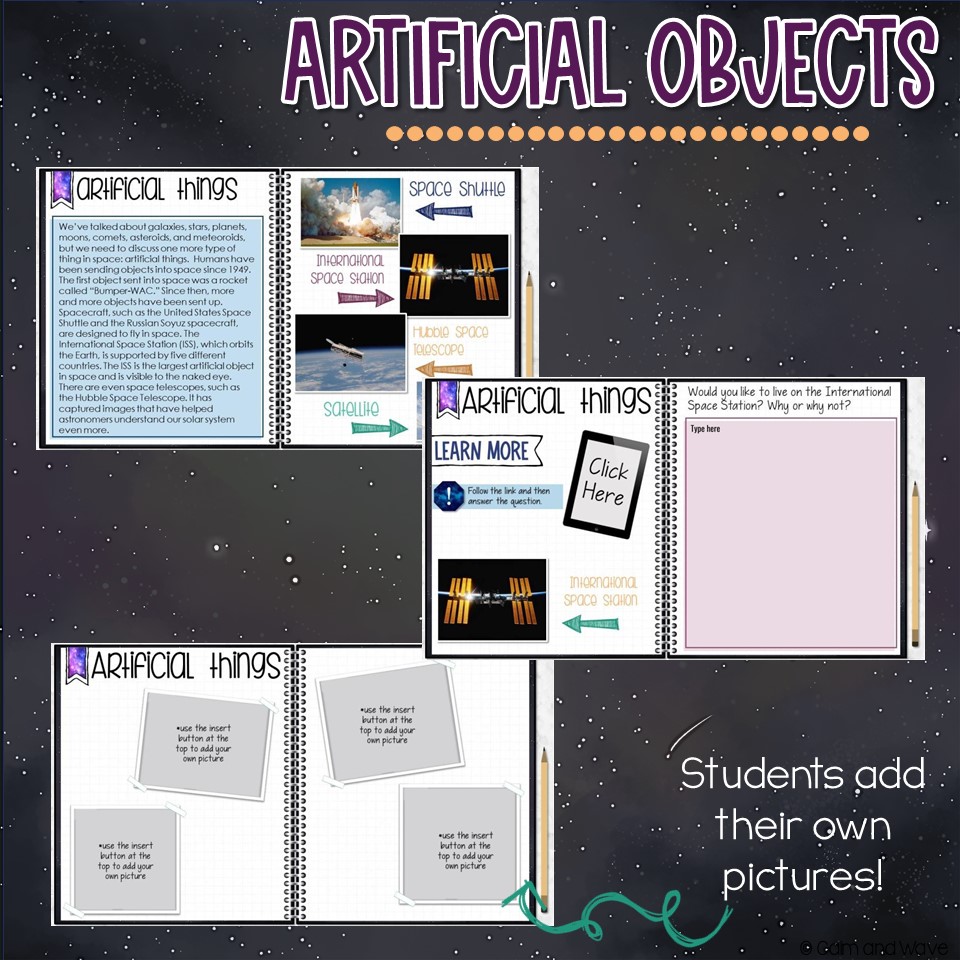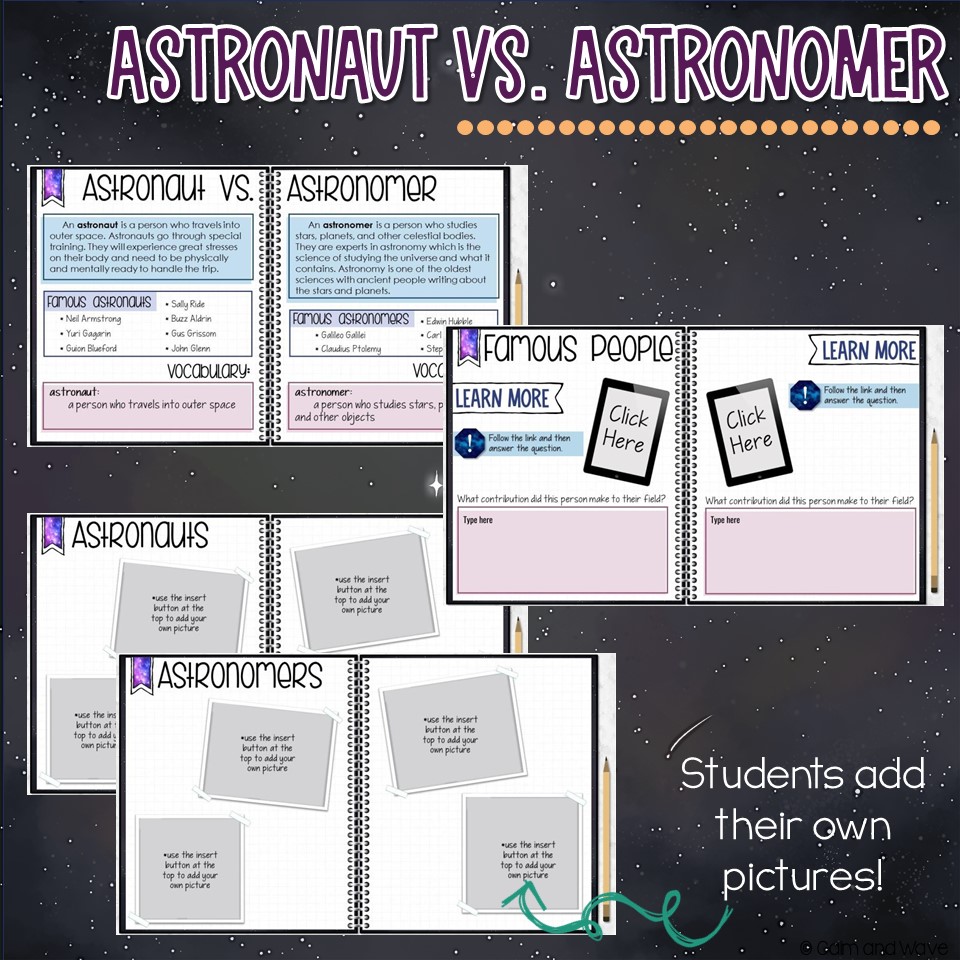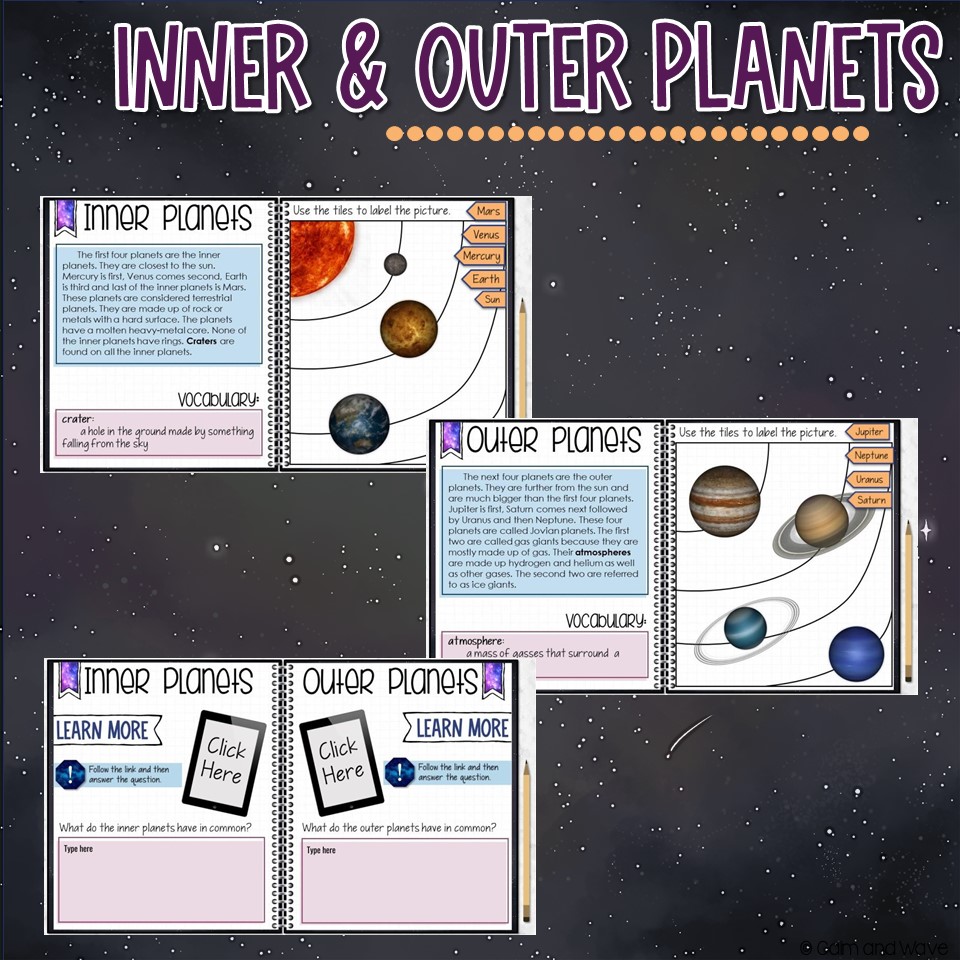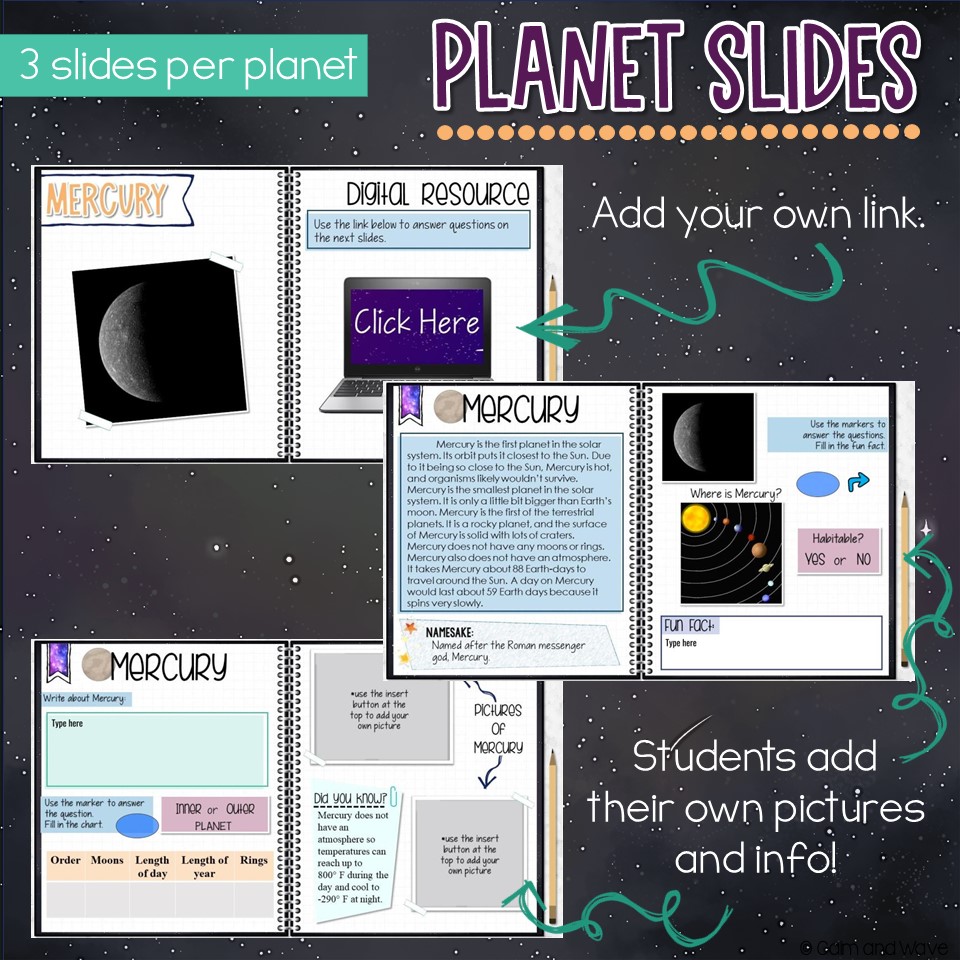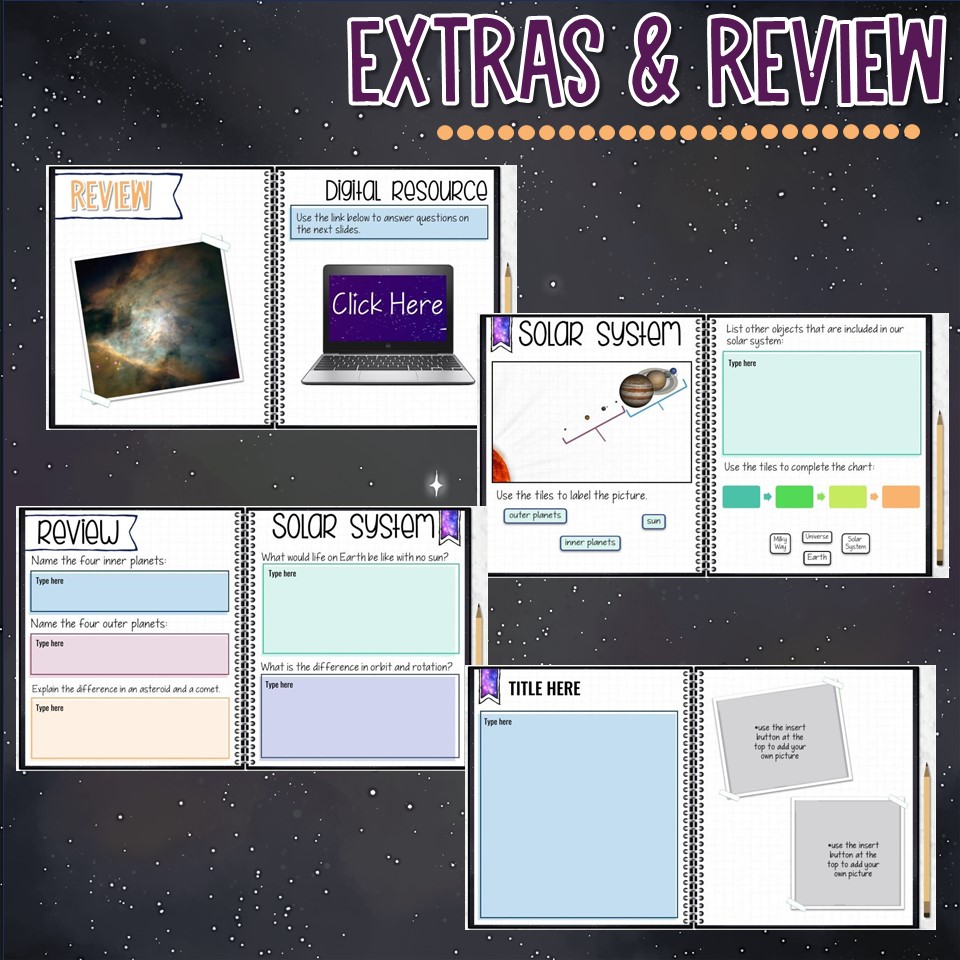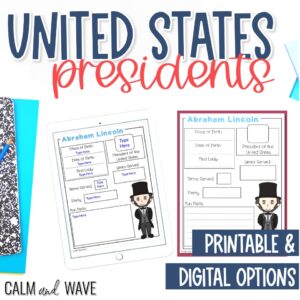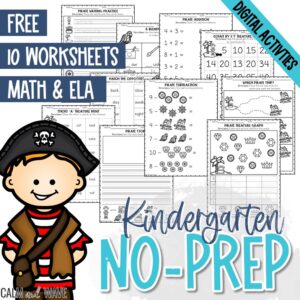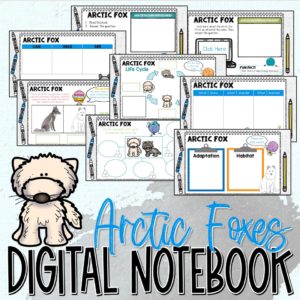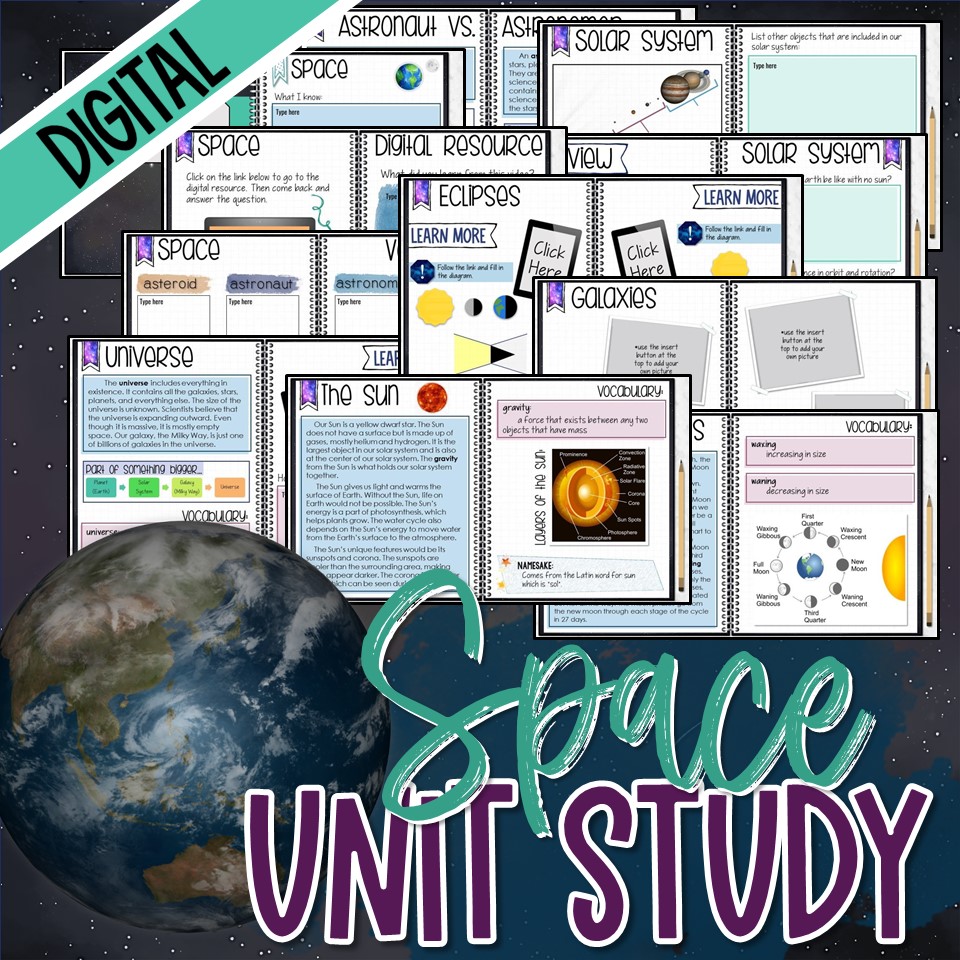
This post may contain affiliate links. This means I may earn some money should you choose to sign up for a program or make a purchase using my link. I only recommend companies or items that I love and think you will too!
Digital Homeschool Space Unit Study
Who hasn't dreamed of being an astronaut? If I weren't scared of flying and most everything, I would have loved growing up and being an astronaut. I am so excited to share this homeschool space unit with you. My kiddos enjoyed learning about the planets, sun, moon, stars, and so much more. The digital format of this space unit study makes it engaging and easy to use. No remembering to print papers, just add your links and assign. (If you prefer paper, click here) If using in a homeschool setting, you can work on this as a family with multiple grades. Older kids can do the reading and typing for the younger kids. My 7th and 2nd grader both enjoyed this lesson. So what is included?
Quick Look at What's Included:
This digital space unit study covers most of the topics associated with space. The digital format of the space unit study is perfect for distance learning. Included on most slides is a reading passage with vocabulary. Open-ended questions help the students expand on what they have learned. Drag and drop activities make for interactive fun. Planner slides help both you and the students stay organized while working through the space unit study.
BONUS: Included in the download is a sample lesson plan. The plans include extensions and extra activities. The space unit lesson plan includes space to build your lesson.
Topics covered:
- Universe
- Galaxy
- Solar System
- Stars
- Sun
- Moons
- Orbit & Rotation
- Eclipses
- Other Objects
- Artificial Objects
- Astronaut & Astronomer
- Inner Planets
- Outer Planets
- Dwarf Planets
- Individual Planets
Also Included:
- KWL Slides
- Planner Slides (4 or 5 day option)
- Vocab Slides
- Digital Resource Slides
- Space Review Slides
Video Preview of Digital Space Unit Study
Most of the slides have a reading passage followed with questions that can be answered with either the reading passage or a digital resource of your choosing. Below, I have added some helpful hints for using digital resources and a video showing how to add your own link to the slides.
How to Use Digital Space Unit Study
Adding Links to Digital Resource Video
In Depth Look at Digital Space Unit Study
Flip through the pictures for an in depth look at the included slides and extras.
PURCHASE HERE
or
Suggested Links & Activities for Digital Space Unit Study
Galaxy & Universe:
What is a Galaxy? (NASA Space Place)
What’s in Space? (NASA Space Place)
Spaced Out: Crash Course Kids #25.1 (YouTube)
Activity: Have the students create their own galaxy. They can use colored pencils, crayons or markers. Another option would be to use paint to make the galaxy. Glow in the Dark paint is a bonus!
Solar System:
Solar System 101 (Nat Geo YouTube)
Solar System (Dr. Binocs Show YouTube)
Our Solar System (NASA)
Activity: Draw and label the solar system using construction paper or poster board.
Stars & the Sun
The Life Cycle of Stars (Institute of Physics YouTube)
All About the Sun (NASA Space Place)
Does the Sun always rise in the East? (MooMooMath)
The Sun or Kid Friendly Version (NASA)
Activity: Shaving Cream Sun
The Moon
Moon Phases Demonstration (NSTA YouTube)
Earth’s Moon (NASA)
Earth’s Moon (“kid friendly” NASA)
Activity: Cookie Moon Phases
Orbit and Rotation
Earth’s Rotation & Revolution (Crash Course Kids)
Why Are Planetary Orbits Elliptical? (Science ABC)
Activity: Create a human representation of orbit vs rotation. You will need 3 people. One person is the Sun, one person the Earth, and one person the Moon. Have them “rotate” and “orbit” one another. This activity really helped the differences to “click.”
Eclipses
Eclipses (NASA Space Place)
Solar Eclipses 101 (Nat Geo YouTube)
Lunar Eclipse 101 (Nat Geo YouTube)
*Note: The USA, will be able to see a solar eclipse on April 8, 2024.
Other Objects
What is the Asteroid Belt and the Kuiper Belt? (MooMooMath)
Comets (Dr. Binocs Show)
What Is a Comet? (NASA Space Place)
Asteroid, Comets, and Meteors (NASA)
Activity: Watch a meteor shower. Check out this list here.
Artificial Objects
International Space Station Tour (CBS)
Take a Tour of the Space Station (SciShow Kids)
NASA Live Stream – (Space Videos) (comments aren’t monitored)
Activity: Would you like to live on the ISS? (writing activity)
– Have the child write about whether they would like to live on the ISS.
Astronauts and Astronomers
What Do Astronauts Do? (SciShow Kids)
Astronomer – Career Video (Yes! Our Kids Can)
Space Place Live (can read transcripts)
Activity: Write a biography on an astronaut or astronomer.
Inner and Outer Planets
The Rocky Planets (SciShow Kids)
The Gas Giants (SciShow Kids)
Activity: Have the students make a Venn diagram comparing/contrasting the inner vs. outer planets.
Dwarf Planets
All About Pluto (NASA Space Place)
Why is Pluto Not a Planet? (Peekaboo Kidz)
Pluto (NASA)
Activity: An option would be to write a letter in support of Pluto being a full size planet or why it should stay a dwarf planet.
Mercury
Mercury 101 (Nat Geo)
Venus
Venus 101 (Nat Geo)
Earth
Earth 101 (Nat Geo)
Mars
Mars 101 (Nat Geo)
Jupiter
Jupiter 101 (Nat Geo)
Saturn
Saturn 101 (Nat Geo)
Uranus
Uranus 101 (Nat Geo)
Neptune
Neptune 101 (Nat Geo)
PURCHASE HERE
or


